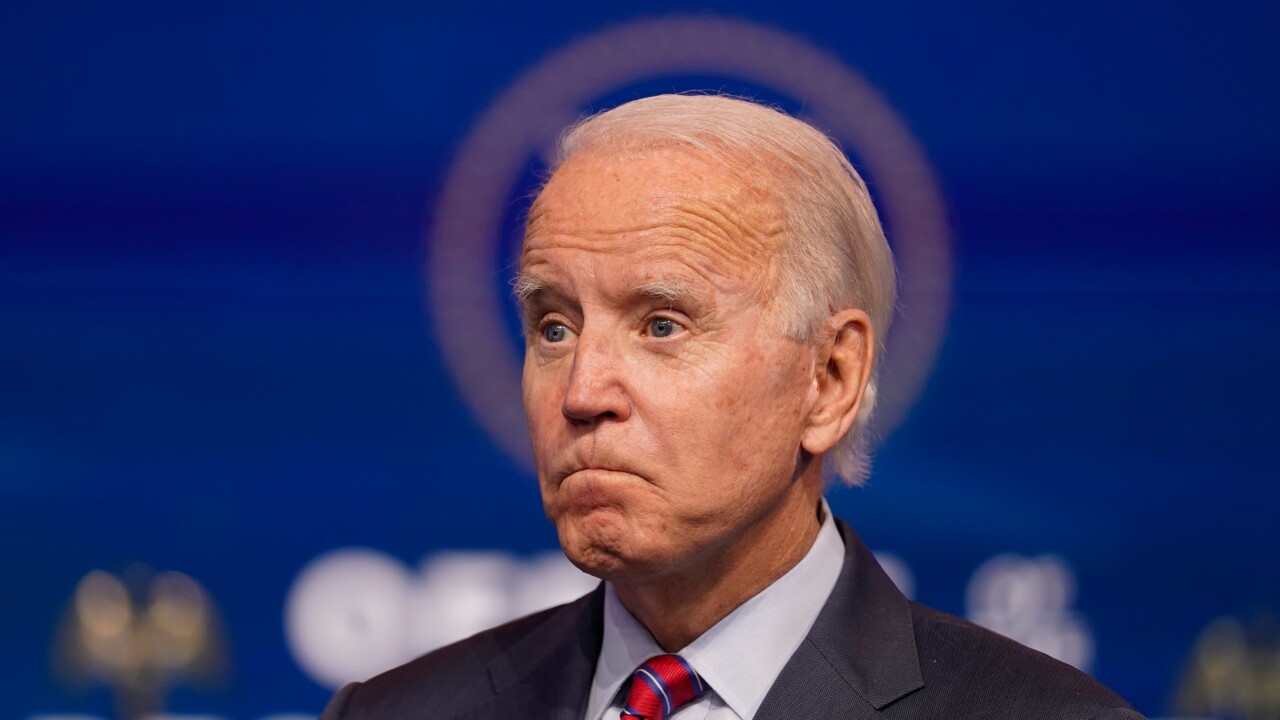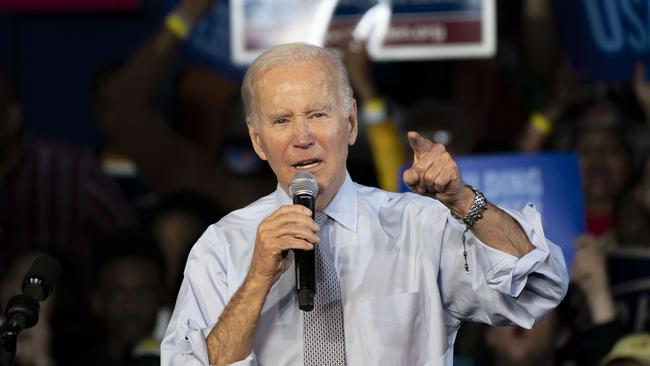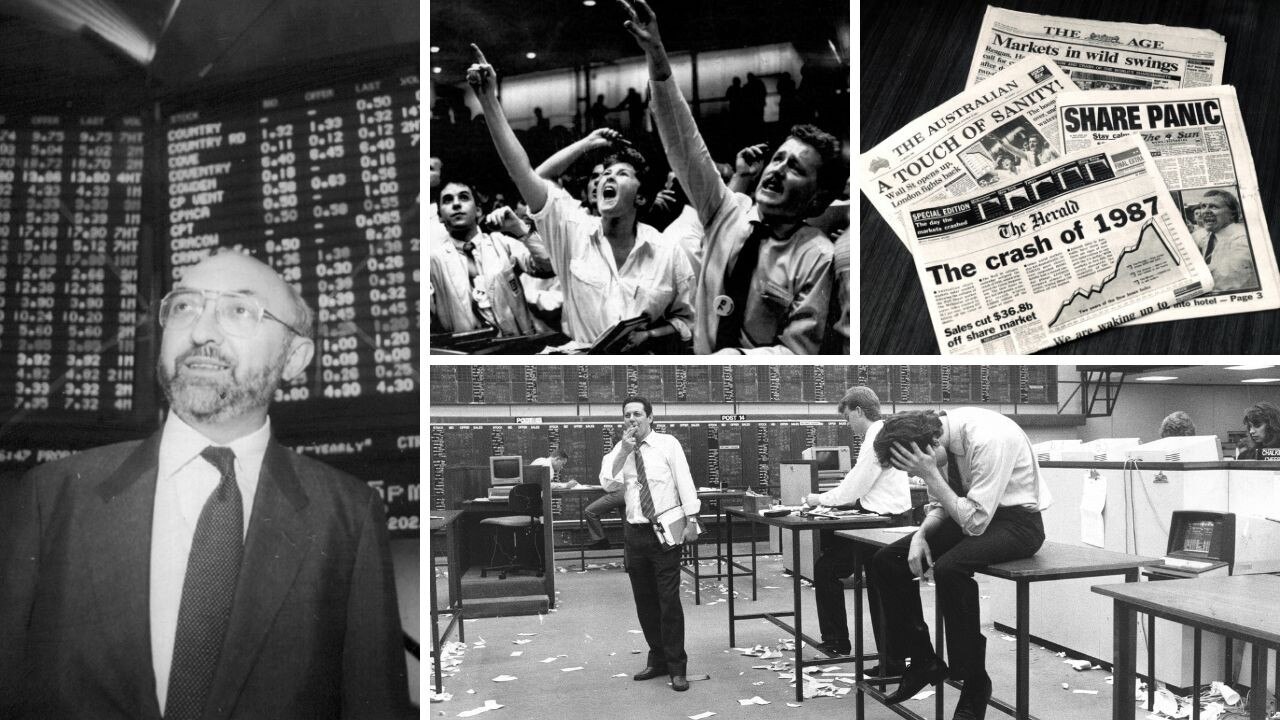Wall St’s surprise ride to the mid-terms
American investors seem determined to be bullish despite the prospect of a paralysed hyper-left wing presidency after the US mid-term elections.

Terry McCrann
Don't miss out on the headlines from Terry McCrann. Followed categories will be added to My News.
It seems American investors are determined to be bullish – with one somewhat curious and decidedly interesting exception.
Since Thursday our time, the Dow has surged around 1000 points into the face of what one would have thought were two decided negatives.
The first was Fed head Jerome Powell’s sobering ‘reality check’, when he lifted the official interest rate yet again by 75 points, taking it to just shy of 4 per cent.
Indeed, even more pungently, far from signalling the ‘pivot’ to smaller hikes into the future and indeed an eventual stop to hikes at all – an expectation that had driven the Dow up 4000 points through October – he talked coolly but firmly tough.
After his press conference the Dow promptly dropped 750 points; but since then has come back around 1000 – straight into what, again, one might have thought would have given investors some additional ‘pause’: the US mid-terms.
We will see the results Wednesday morning our time; but the only real question is the exact size of a Republican sweep and the consequent paralysed presidency for the next two years. Maybe – probably, certainly – that’s seen as a positive on and for Wall St.

But it’s a very stupid – if classic, and entirely short-term – Wall St perspective.
A paralysed hyper-left wing presidency, as the Biden one is, would be a positive if the paralysis had been from the start. But starting two years in, the paralysis now only works to lock in all the damage that the Biden presidency has already done: on energy, on the deficit, on the $US30tr ($47tr) debt, on inflation, etc etc. Further, and critically, the gridlock will put even more pressure on the Fed to raise rates higher and keep them higher for longer – not exactly, one would have thought, the outcome Wall St would lust for.
Then, the day after we get the election results, we get the next monthly US inflation number. The way Powell was talking last week, it’s unlikely to be a number that he – and Wall St – would cheer.
Now, as I wrote last week, I was both surprised and impressed by how – coolly and logically – tough Powell spoke. The proof will only be in the delivery through 2023; and obviously, the inflation and broader economic and business outcomes.
If you really wanted to be optimistic, you might argue that Wall St was looking way beyond all the rate hikes and the pain to the positive 1980s-style outcomes that would follow. That sort of ‘long-term’ would also include a return to a Republican presidency in 2024 – either President Trump redux or President DeSantis – combined with Republican control of both Congress and Senate.
But I’m sceptical. There are two truths about Wall St - its greed and its definition of the long-term as ‘after the weekend’.
The ‘interesting exception’ is the performance of the once-renowned FAANG stocks – an acronym that seems to have joined BRICs in the dustbin of history.
Remember BRICs – Brazil, Russia, India and China? They were going to drive and dominate the global economy and indeed ‘everything’?
Nobody seems to talk, or give lavish seminars, about ‘the’ group any more.
And the same applies to the FAANGs building and dominating our futures – Facebook (now Meta), Amazon and Apple, Netflix and Google (Alphabet).
Plus Microsoft, which didn’t fit neatly into the acronym.
As our Anthony Keane writes, their share prices (and market values) have all cratered – not just Meta, where it’s been largely self and (Mark) Zuckerberg created. Apple’s come through best, down only 20 per cent from its peak.
Yet despite that tech handbrake the rest of Wall St has held up quite remarkably into the rate storm. I suggest we are headed for some ‘interesting’ times.
More Coverage
Originally published as Wall St’s surprise ride to the mid-terms





